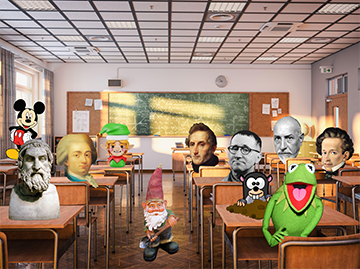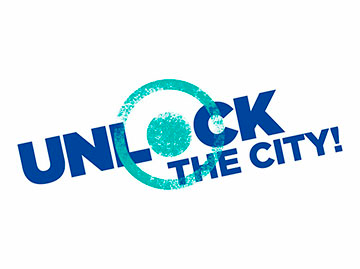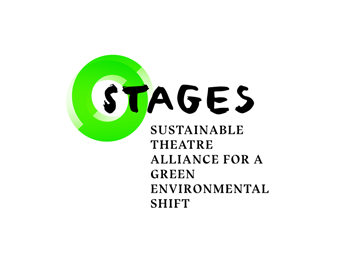Carmelo Rifici chooses one of Chekhov’s masterpieces, “The seagull”, «a classic, a pièce which I have always loved, which speaks of things that everyone knows: of family relationships, of conflicts and of delusions, without being aware».
-
Teatro Studio Melato
A stage made of curtains that cry, that move as though they were alive, as though they were the main characters of the play. A young theatre actor full of doubt regarding the need to make theatre nowadays, a famous writer full of doubt regarding his need to write, a young ambitious woman who dreams of success, a successful woman who doesn’t dream, a humanity which yearns to be a character, characters who are reflected in a lake which mirrors their miserable humanity. The lake: the etymology of the word comes from the latin Lacus, meaning hole, opening, a cavity full of water, which links to the word lakkos. If the word is taken in its symbolic meaning we could say that those who live near a lake live on a rift, on an abyss. The cavity is however filled with fresh water, flat, which mirrors the city. For this reason the Lake also becomes synonymous with the eye, it is the (deep) eye of the city in which the city is reflected. This will be our “seagull” with the violent “song”: a play on the conflict which forms between the real and the desirable, between truth and artifice, between new and old, between form and content, between that which is necessary and that which doesn’t seem necessary at all.
The play was born following Carmelo Rifici’s nomination as director of the Theatre of Lugano when the director found himself in the extraordinary situation of inaugurating a new theatre which is reflected in the city’s lake, just like Kostantin, who begins his adventure as a writer by building a little theatre on the bank of his home lake. The theatre is called LAC, which in French means lake. In Chekhov’s “The seagull” Nina says “my parents think I want to make theatre but it is the lake that attracts me”. The lake and the theatre are the same thing: the mirror in which a city is reflected. Whatever the city tries to hide, the lake will show, just like the theatre shows everything that humanity keeps secret.
Duration: 2 hours and 50 minutes with interval
Learn more
Booklet
ReadA stage made of curtains that cry, that move as though they were alive, as though they were the main characters of the play. A young theatre actor full of doubt regarding the need to make theatre nowadays, a famous writer full of doubt regarding his need to write, a young ambitious woman who dreams of success, a successful woman who doesn’t dream, a humanity which yearns to be a character, characters who are reflected in a lake which mirrors their miserable humanity. The lake: the etymology of the word comes from the latin Lacus, meaning hole, opening, a cavity full of water, which links to the word lakkos. If the word is taken in its symbolic meaning we could say that those who live near a lake live on a rift, on an abyss. The cavity is however filled with fresh water, flat, which mirrors the city. For this reason the Lake also becomes synonymous with the eye, it is the (deep) eye of the city in which the city is reflected. This will be our “seagull” with the violent “song”: a play on the conflict which forms between the real and the desirable, between truth and artifice, between new and old, between form and content, between that which is necessary and that which doesn’t seem necessary at all.
The play was born following Carmelo Rifici’s nomination as director of the Theatre of Lugano when the director found himself in the extraordinary situation of inaugurating a new theatre which is reflected in the city’s lake, just like Kostantin, who begins his adventure as a writer by building a little theatre on the bank of his home lake. The theatre is called LAC, which in French means lake. In Chekhov’s “The seagull” Nina says “my parents think I want to make theatre but it is the lake that attracts me”. The lake and the theatre are the same thing: the mirror in which a city is reflected. Whatever the city tries to hide, the lake will show, just like the theatre shows everything that humanity keeps secret.
Duration: 2 hours and 50 minutes with interval
Learn more
Booklet
ReadCredits
Piccolo Teatro Studio Melato
from 12 to 24 January 2016
Gabbiano (Seagull)
by Anton Chekhov
adapted and directed by Carmelo Rifici
sets by Margherita Palli
costumes by Margherita Baldoni
music by Zeno Gabaglio
lighting by Jean Luc Chammonat
with (in alphabetical order) Fausto Russo Alesi, Maria Pilar Pérez Aspa, Giovanni Crippa, Ruggero Dondi, Mariangela Granelli, Igor Horvat, Emiliano Masala, Giorgia Senesi, Anahi Traversi
and with the kind participation of Antonio Ballerio Maspero
sets, props and costumes created by the Laboratories of the Piccolo Teatro
a LuganoInScena production
in coproduction with LAC Lugano Arte e Cultura, Piccolo Teatro Milano – Teatro d’Europa and Teatro Sociale di Bellinzona
with the support of The Swiss Arts Council Pro Helvetia
Save indications to the contrary, the times of the show at the Piccolo are as follows: Tuesday, Thursday and Saturday, 7.30 p.m.; Wednesday and Friday 8.30 p.m.; Sunday 4.00 p.m.
Sunday 17 January h. 4 pm and 8.30 pm
Saturday 23 January h. 3 pm and 7.30 pm
A PICCOLO TEATRO PRODUCTION – SEASON SERIES









